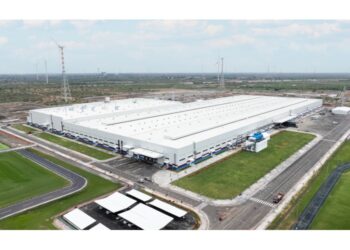· What are the primary benefits of adopting electric commercial vehicles (ECVs) compared to traditional Internal Combustion Engines (ICE) vehicles?
Electric vehicle adoption in India is still in its nascent stages, but embracing electric commercial vehicles (ECVs) offers significant advantages over traditional Internal Combustion Engine (ICE) vehicles. ECVs produce zero direct emissions, which will substantially reduce greenhouse gas emissions and air pollution in urban areas. However, it’s crucial to focus on renewable energy sources for charging stations to maximize environmental benefits. ECVs typically have lower operating costs due to cheaper electricity and reduced maintenance needs. Their quieter operation makes them ideal for urban deliveries and noise-sensitive areas. Electric motors provide instant torque, enhancing performance in stop-and-go traffic. Despite these benefits, challenges remain, including limited range, longer charging times, and the need for extensive charging infrastructure. These factors must be carefully considered when evaluating the transition to ECVs in the Indian context.
· How do the operating costs of electric commercial vehicles compare with those of internal combustion engine vehicles over their lifespan?
Electric commercial vehicles (ECVs) generally have lower operating costs compared to internal combustion engine (ICE) vehicles over their lifespan. Electrical Vehicles make huge economic sense if the vehicle is being driven more than 100 kms, which in case of commercial vehicles is given. The primary cost advantage comes from lower fuel expenses, as electricity is typically cheaper than diesel or gasoline. ECVs also have fewer moving parts, resulting in reduced maintenance costs and less frequent servicing. However, the initial purchase price of ECVs is often higher, which can offset some operational savings. Battery replacement costs must also be considered, though battery longevity is improving. The total cost of ownership depends on factors like vehicle usage patterns, electricity rates, and fuel prices.
· What challenges do fleet operators face when transitioning to electric commercial vehicles, and how can they be mitigated?
Fleet operators transitioning to electric commercial vehicles (ECVs) face several challenges. Limited vehicle range is a primary concern, especially for long-haul operations. This can be mitigated by careful route planning and strategically placing charging stations. The higher upfront costs of ECVs on replacement of old ICE vehicles or adding new fleet strains budget, though this may be offset by lower operating costs and government incentives over time.
Insufficient charging infrastructure is another major hurdle. Operators can address this by investing in private charging stations or partnering with charging network providers. Driver training is crucial, as operating ECVs requires different skills and habits. Comprehensive training programs can ease this transition. Fleet management becomes more complex, requiring new systems to monitor battery levels, plan charging stops, and optimize routes.
Another challenge is the transition of maintenance practices and workforce training. Automotive Skills Development Council (ASDC) understands the critical role of skilled workforce play in the EV ecosystem. We are actively working to bridge the skills gap by providing training programs, certifications, and initiatives focused on EVs. ASDC’s e-learning platform offers 46 courses covering various aspects of the auto industry, including EV basics. We have various tie-ups with Electrical Vehicle Cab services such as Blue-Smart for their workforce skilling.
· How does the range and battery life of electric commercial vehicles vary based on load, terrain, and driving conditions?
The range and battery life of ECVs can vary significantly based on several factors such as load, terrain, and driving conditions. Heavier loads increase energy consumption, thereby reducing the vehicle’s range per charge. Similarly, driving uphill or on rough terrain requires more power, impacting the vehicle’s efficiency and reducing its range compared to driving on flat roads or downhill gradients. Driving habits and conditions such as speed, acceleration, and braking also influence battery life. Aggressive driving styles and frequent stops and starts can drain the battery faster, reducing overall range. Conversely, smooth driving and consistent speeds optimize energy efficiency and extend the vehicle’s range. Driving in limits give huge benefit in improving the range of vehicle and in turn also saves road accidents.
Technological advancements in battery technology are continuously improving ECVs’ performance under varying conditions. Innovations such as regenerative braking, thermal management systems, and enhanced battery chemistry are addressing these challenges, aiming to increase range and durability while optimizing overall performance in diverse operating environments.
· What advancements in battery technology are expected to enhance the performance and adoption of electric commercial vehicles?
There are lot of Corporates who are spending millions on research in battery technology to significantly enhance the performance and adoption of electric commercial vehicles (ECVs). Solid-state batteries are a promising development, offering higher energy density, faster charging times, and improved safety compared to current lithium-ion batteries. This could lead to increased range and reduced charging downtime for ECVs.
Innovations in battery chemistry, such as lithium-sulfur and lithium-air batteries, may provide even higher energy densities, potentially doubling or tripling current ranges. Improved thermal management systems are expected to enhance battery life and performance in extreme temperatures. Fast-charging technologies are evolving, with aims to reduce charging times to levels comparable with refueling ICE vehicles. Recycling technologies are also progressing, addressing environmental concerns and potentially reducing battery costs. These combined advancements are expected to address key ECV adoption barriers, making them more competitive with traditional commercial vehicles in terms of range, cost, and operational flexibility.
· How does the availability and accessibility of charging infrastructure impact the widespread adoption of electric commercial vehicles?
The availability and accessibility of charging infrastructure play a crucial role in the widespread adoption of ECVs. For fleet operators and businesses considering transitioning to ECVs, a robust charging network is essential to ensure operational efficiency and reliability. While the government and private players are actively working on expanding the charging network, there’s still a significant gap to bridge. The expansion of public charging stations has been striking, with the number of chargers increasing from around 451 in 2021 to over 13,000 by the end of 2023 to reach 16,000 by March 2024, as per the Bureau of Energy Efficiency. The government is laying the groundwork for a robust charging infrastructure. Initiatives like the “ChargE India” program aim to establish charging stations every 250 km on major highways and every 160 km in urban areas. Beyond public charging stations, other innovative solutions are emerging. Battery swapping stations offer a convenient alternative, allowing users to quickly replace a depleted battery with a fully charged one.
· What are the environmental benefits of electric commercial vehicles in terms of emissions reduction and air quality improvement?
Electric commercial vehicles (ECVs) offer substantial environmental benefits, primarily through significant reductions in emissions and improvements in air quality. Unlike internal combustion engine (ICE) vehicles, which emit pollutants such as carbon dioxide (CO2), nitrogen oxides (NOx), and particulate matter (PM), ECVs produce zero tailpipe emissions during operation. This immediate elimination of harmful pollutants contributes directly to improved urban air quality, reducing smog and health risks associated with poor air quality.
· How do government policies and incentives influence the market for electric commercial vehicles?
Government policies and incentives are crucial in shaping the electric commercial vehicle (ECV) market. Demand incentives, like India’s FAME-II scheme, provide subsidies that offset ECVs’ higher upfront costs, boosting consumer demand and adoption. Regulatory measures, such as mandating ECV use in specific sectors and restricting polluting vehicle permits, create captive demand, driving market growth. Infrastructure support, including investments in public charging networks and incentives for private charging facilities, addresses range anxiety and enhances the ECV ecosystem for commercial viability. Manufacturing incentives like phased production programs and reduced import duties on EV components encourage local production, lowering costs and increasing ECV availability. A comprehensive policy framework integrating demand-side, supply-side, and infrastructure incentives is essential for nurturing the ECV market and facilitating the shift to sustainable commercial transportation.
· What role do electric commercial vehicles play in the broader context of sustainable urban logistics and smart city initiatives?
ECVs can be integrated into innovative last-mile delivery solutions, such as cargo bikes and micro-distribution centers, to optimize urban freight transport. By consolidating deliveries at centralized locations and utilizing clean transportation modes, ECVs help reduce congestion and emissions in city centers. Governments are actively promoting the adoption of ECVs through incentives, subsidies, and the development of charging infrastructure. This support, coupled with advancements in battery technology and the gradual phasing out of conventional vehicles, is driving the transition towards sustainable urban logistics.
· How can data analytics and telematics be used to optimize the operation and maintenance of electric commercial vehicle fleets?
By leveraging data from ECVs and charging infrastructure, fleet managers can make informed decisions to enhance efficiency, reduce costs, and improve sustainability. Route optimization is a key application, using historical driving data to identify efficient routes considering factors like traffic, weather, and energy consumption. This enables better charging schedule planning and minimizes unexpected delays, but it is very early stage in India.
Hypothetically, by monitoring vehicle performance data, such as battery health, motor efficiency, and component wear, fleet managers may anticipate potential issues and schedule maintenance proactively. This not only reduces the risk of unexpected breakdowns but also extends the lifespan of ECV components, leading to cost savings. By harnessing the power of data analytics and telematics, ECV fleet managers can make more informed decisions, improve operational efficiency, and contribute to the overall sustainability of their fleets.













